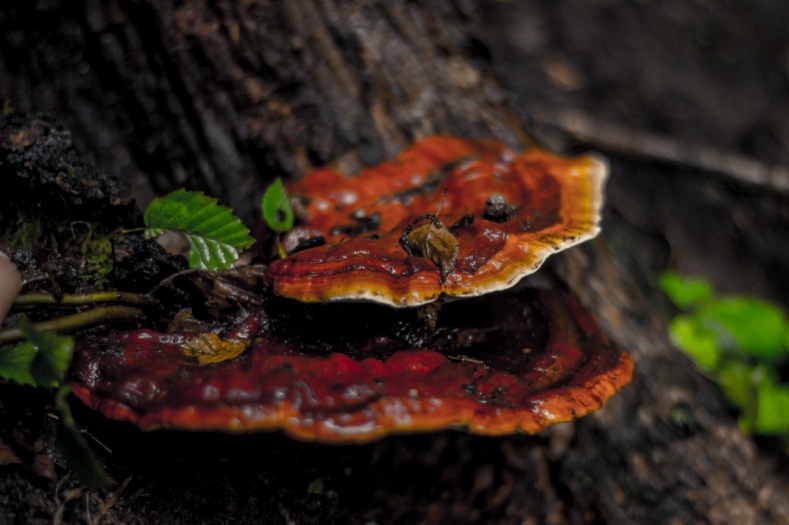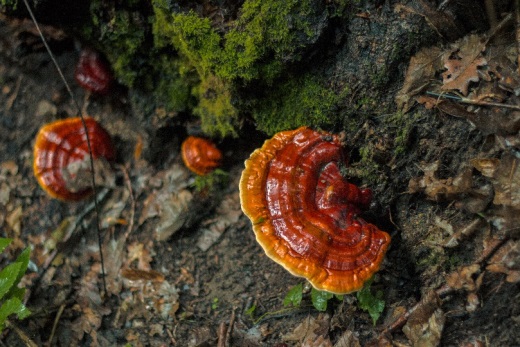Ganoderma lucidum (Curtis) P.Karst.



| ENG | Lingzhi/Reishi mushroom |
| SK | lesklokôrka lesklá |
| CZ | lesklokôrka obyčajní |
| PL | lakownica żółtawa |
| HU | pecsétviaszgomba |
Taxonomic characteristic
Realm: Fungi, Class: Agaricomycetes, Genus: Ganoderma
Using
Reishi is considered as a natural medicine, that supports longevity and maintain the vitality of living organisms. Her beneficial effects in patients with hepatitis, hyperglycemia, chronic bronchitis, cancer, muscular dystrophy, arteriosclerosis, hypertension, hypercholesterolemia, and other diagnoses were confirmed in many clinical studies. Fruiting bodies, mycelium and spores of this fungus are recently receiving more and more attention in the context of the development of new medicaments. Reishi also helps in diseases such as: rheumatoid arthritis, and rheumatism, colon cancer, diseases of the prostate, breast cancer, lung, ovarian and cervical cancer. The active compounds are also well applicable in the treatment of leukaemia, asthma, diabetes, malaria, senile osteoporosis and mental disorders (Nahata, 2013).
Botanical charakteristic
Reishi is the wood-destroying fungus inducing the white putridity of wood. It produces a semi-circular fruiting body with or without eccentric stalk, aside growth to the substrate. Average size of hat is 6 – 12 cm and it is covered with a shiny layer of tawny, dark brown to purple colour. The edge of the fruiting body is curled. Stem is hard and long to 15 cm, with diameter from 1 to 2 cm. The spores are white to brown colour with musty aroma. The pulp has cork consistency and unpleasant taste of the flour. Fungus has tough structure, and normally it is not used for consumption (Jablonský, Šašek, 2006).
Why to have the plant in your garden:
Reishi is cultivated on the stumps which we dig under the layer of soil. Fruiting bodies gradually grow above the surface, and after their collection, they can be post-dried and used as decoration or processed into powder, and then used in a variety form of macerates and tinctures.
Text:
Ing. Dávid Chmelár, Ing. Marcel Golian, SUA, Nitra, Slovak Republic
Photo:
Ing. Dávid Chmelár, Ing. Marcel Golian, SUA, Nitra, Slovak Republic
English Translation:
Ing. Ján Farkaš, SUA, Nitra, Slovak Republic
Links to scientific articles
Jablonský, I., Šašek, V. 2006. Jedlé a léčivé houby. Brazda Praha. 263. ISBN 80-209-0341-0.
Nahata, A. 2013. Ganoderma lucidum: A Potent Medicinal Mushroom with Numerous Health Benefits. Pharmaceut Anal Acta. 4:e159. doi:10.4172/2153-2435.1000e159.

